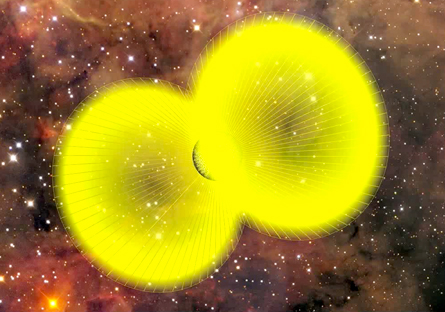- More than 2 years ago

The discovery is another example of how programs downloaded to home and office computers can help analyze mountains of data, says physicist Francois Grey, coordinator of the Citizen Cyberscience Centre, a partnership of CERN, the University of Geneva and the United Nations Institute for Training and Research. Enabled by the sophistication of modern web browsers and graphics technologies, plus huge increases in home Internet bandwidth, these volunteer computing projects contribute time and wattage that can add up to power greater than that of a supercomputer.
“We can’t really do this processing on a standard university-type cluster,” says astronomer James Cordes of Cornell University, part of the team reporting the new pulsar.
The home computers that assisted in the pulsar’s discovery are involved in the Einstein@Home project, which was developed at the University of Wisconsin–Milwaukee and the Max Planck Institute for Gravitational Physics in Germany. Launched in 2005, Einstein@home started by searching for gravitational wave signals in data from the LIGO observatory. In March of 2009, Einstein@Home also began searching radio wave data from the Arecibo Observatory in Puerto Rico.
Data from Arecibo are first shipped to Cornell and Hanover, Germany, where the information is processed into “work units,” chunks of about 4 million numbers that are produced in just under five minutes of telescope observations. These units are sent to volunteer computers — each unit is sent to two machines so the calculations can be validated — and after home processing the data are sent back to Hanover. There, a human being — in this case Benjamin Knispel of the Max Planck Institute for Gravitational Physics — looks at the processed plots and flags anything that looks promising. The computers that revealed the new pulsar were in the homes of Chris and Helen Colvin of Ames, Iowa, and Daniel Gebhardt of Universität Mainz in Germany.
The Colvins were notified of their computer’s discovery in a decidedly nontechnical manner — by letter.
“He tried to email us a few times, but we’ve been so busy this summer that I neglected my personal email,” Chris Colvin said in a teleconference.
A pulsar is the remains of a star that’s undergone a supernova explosion. The remaining small, dense star is like a giant atomic nucleus, so compact that a teaspoon of pulsar material would weigh something like 100 million tons, Cordes says. Pulsars rotate and, like a lighthouse beacon, emit a beam of radiation that telescopes can detect here on Earth.
The new pulsar, PSR J2007+2722, rotates a relatively rapid 41 times per second and is in the Milky Way, roughly 17,000 light years from Earth. While most stars (and pulsars) hang out in pairs, PSR J2007+2722 appears to be alone. But it could have had a companion that blew up, showering it with debris that accelerated its rotation. Or it could just be a very fast young pulsar without a companion.
“Either way, it is unusual,” says astrophysicist Alice Harding of NASA’s Goddard Space Flight Center in Greenbelt, Md.
The find demonstrates the effectiveness of Einstein@Home, says Harding, who was not involved in the research.
Similar endeavors will likely lead to an increasing number of citizen discoveries, adds Grey, who recently helped set up the first volunteer scientific computing project in China, called CAS@home.
“If anything, I think this trend is accelerating thanks to the social networking phenomenon of recent years,” he says. “Indeed, you can say that citizen cyberscience is social networking with a scientific purpose.”
Einstein@Home is based on software from BOINC, a project at the University of California, Berkeley that enables volunteer computing efforts such as SETI@home, Quake Catcher Network and Climateprediction.net.
More than 108,000 volunteer computers downloaded work from Einstein@Home during the first week in August. Just the electrical power donated by volunteers would cost more than $4 million a year at typical U.S. rates, the research team notes.
Pulsar in the Milky Way from Science News on Vimeo.
A newly discovered pulsar in the Milky Way, found by the volunteer computing project Einstein@Home, is shown in an animated illustration. The pulsar’s rotational axis is shown in white, its magnetic axis in yellow. The pulsar emits radio waves (yellow cones) that can be detected on Earth.
Credit: courtesy of F. Mokler





